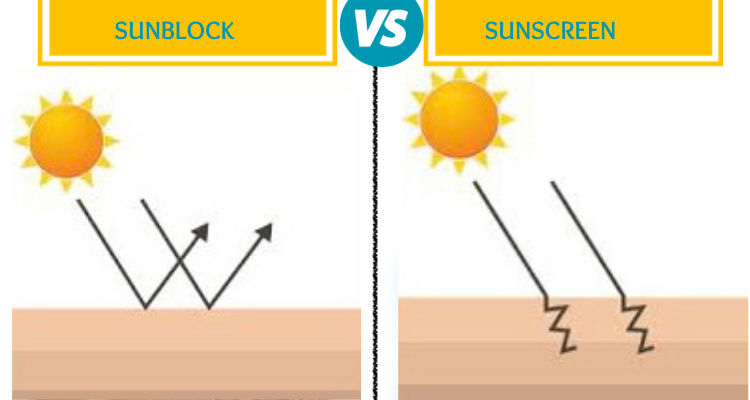Caring for and protecting our skin should always be a top priority, and if you've read any of our previous articles on sun protection, you'll know just how crucial it is to shield your skin from the damaging effects of UV radiation. In this regard, the use of sunscreen and sunblock is essential for maintaining healthy skin. However, have you ever wondered whether these protectors and blockers work in the same way?
Sunblock and sunscreen are your best allies for preventing sun damage. But it's common for confusion to arise when purchasing these products because many people tend to think they're the same or can't distinguish the difference between them.
If you're curious about the differences between these two protection mechanisms, keep reading to learn more!
1. What is Sunblock?
Sunblock is a physical defense mechanism against UV rays that settles on the skin, creating a protective barrier. This barrier reflects the sun's rays away from the skin, preventing them from penetrating.
Sunblocks tend to be somewhat opaque and can usually be seen on the skin after application due to their thicker consistency compared to chemical sunscreens.
2. What Are the Differences Between Sunblock and Sunscreen?
Differences in Properties:
One of the main distinctions between both products is their consistency. Sunblocks are thick to the touch and often white in color. In contrast, sunscreens are usually transparent and invisible when applied to the skin, making them blend more quickly.
Differences in Level of Protection:
Both UVB and UVA rays can harm our skin. UVB rays are absorbed by the epidermis (the outer layer of the skin), while UVA rays can penetrate deeper and reach the dermis. A sunblock can protect the skin from both UVA and UVB rays. In contrast, sunscreens primarily protect against UVB rays, although some offer protection against UVA rays as well.
Differences in Protection Mechanism:
Sunblock, as the name suggests, blocks and repels ultraviolet rays by forming a physical shield. In contrast, sunscreen first absorbs UV rays and then neutralizes them.
Differences in Application and Time of Action:
Sunblock can be applied just minutes before sun exposure. Since it doesn't need to be absorbed by the skin and remains on the surface, there's no need to wait. However, ensure even application and cover all exposed skin.
Sunscreen, on the other hand, requires approximately 20 minutes of absorption time before sun exposure. Be sure to apply it evenly and cover all exposed areas.
3. Protect Your Skin from Sunburn:
Sunburns result from intense and repeated exposure to UV radiation, increasing the risk of premature aging, dark spots, and even skin cancer. They manifest as redness, pain, and increased skin temperature. In severe cases, sunburn can lead to swelling, fluid-filled blisters, and other symptoms like headache and nausea.
Tanning, often seen as a protective mechanism, is actually a health risk. Overexposure to UV light, natural or artificial, without protection, can damage the skin leading to premature skin aging and increasing the risk of skin cancer. No type of tanning is safe (well, except maybe self-tanners which you can apply at home and don't require any type of UV exposure).
In addition to using sunscreen or sunblock, maximize your protection with these tips:
- Avoid sun exposure between 10:00 a.m. and 4:00 p.m. when the sun's rays are strongest.
- Steer clear of tanning beds and sunbathing, as they increase the risk of sunburn.
- Cover your body with wide-brimmed hats, clothing that shields arms and legs, and sunglasses with UVA and UVB protection.
- Remember, no product can offer 100% protection, but proper use, reapplication, and complementary measures can help you achieve the maximum effectiveness of sun protection products.
4. Is SPF 100+ Better Than SPF 50+?
The answer is NO; in reality, the difference is minimal, approximately 1%. An SPF 80+ provides nearly the same protection as an SPF 50+. The significant difference lies in the price. SPF only refers to UVB rays. For comprehensive protection, ensure your sunscreen is labeled as "Broad Spectrum" to guard against UVA rays.



Share Your Opinion, Please